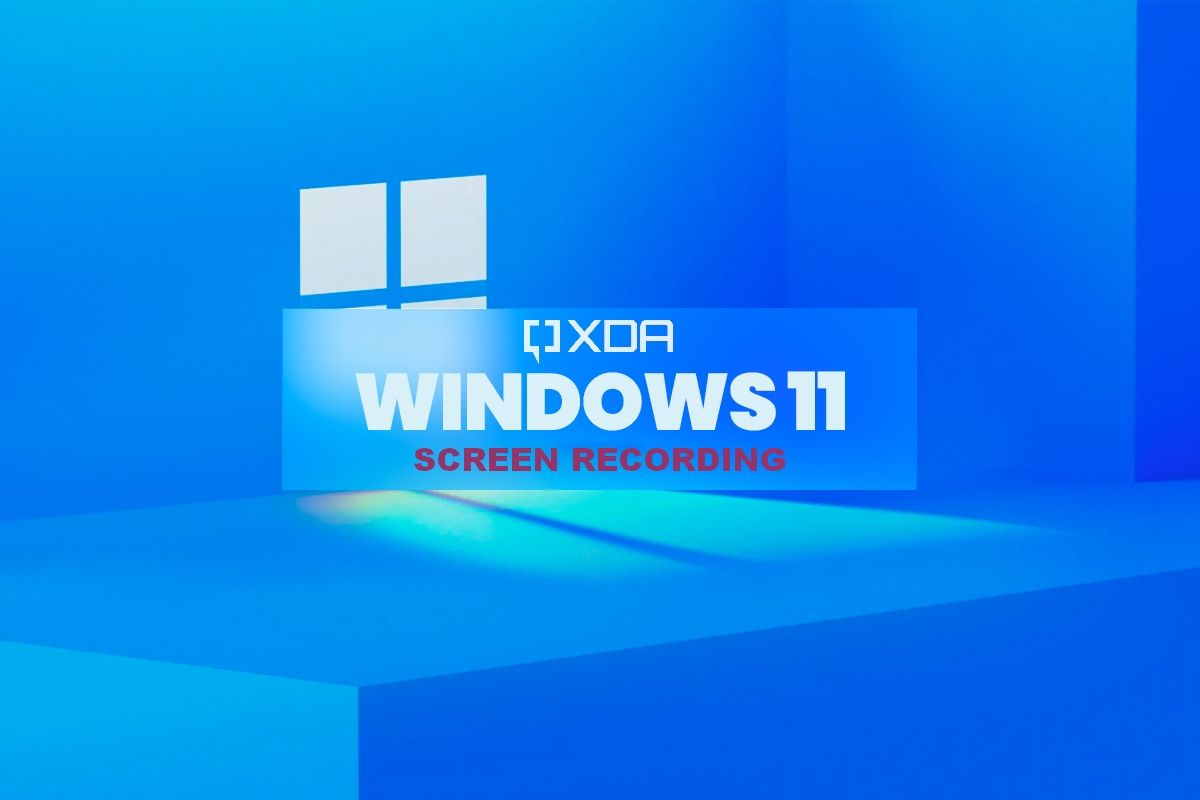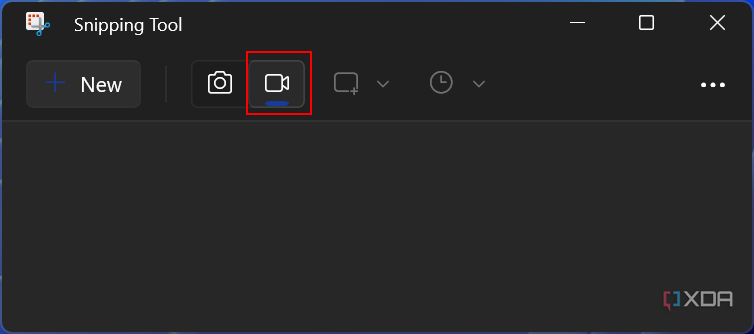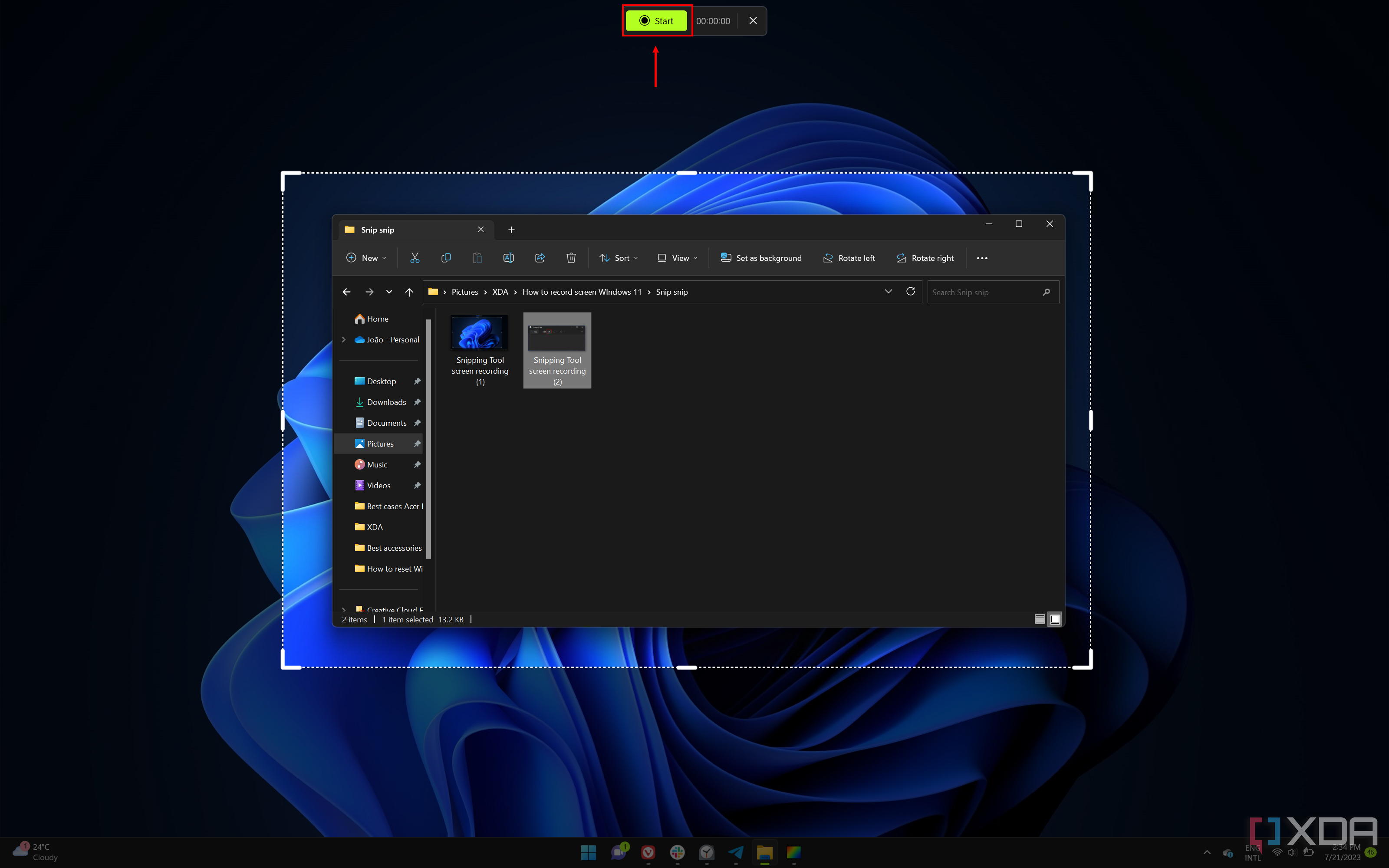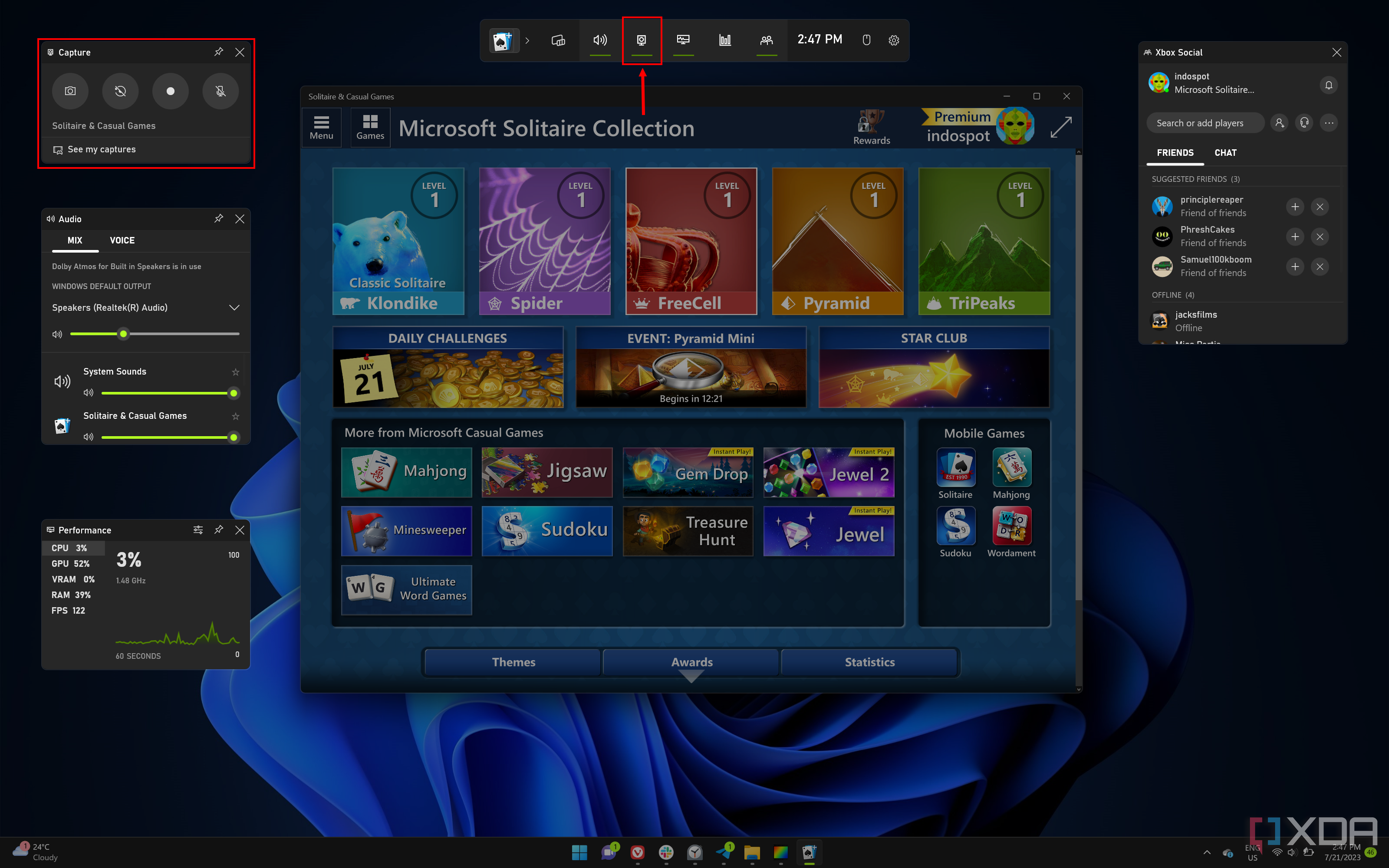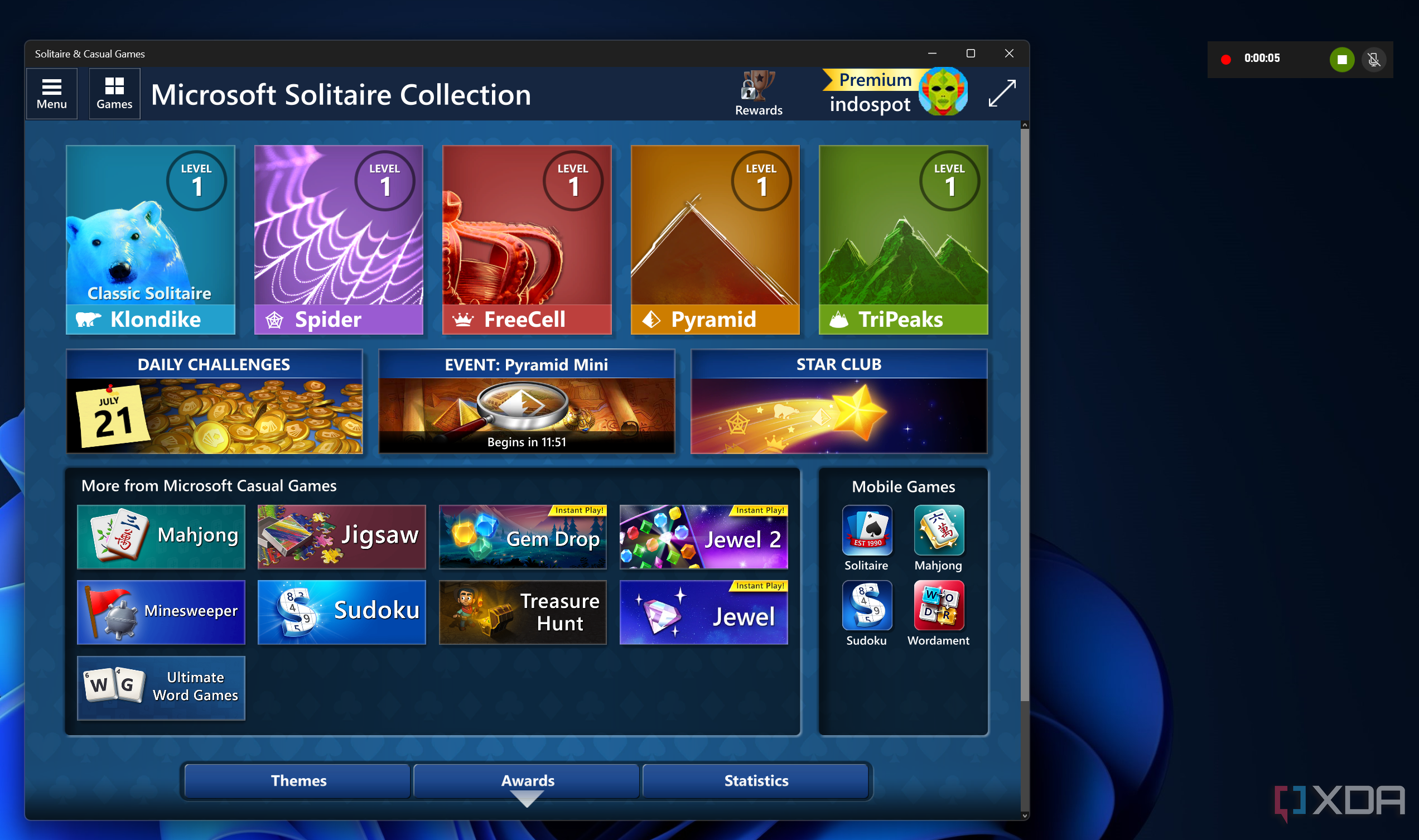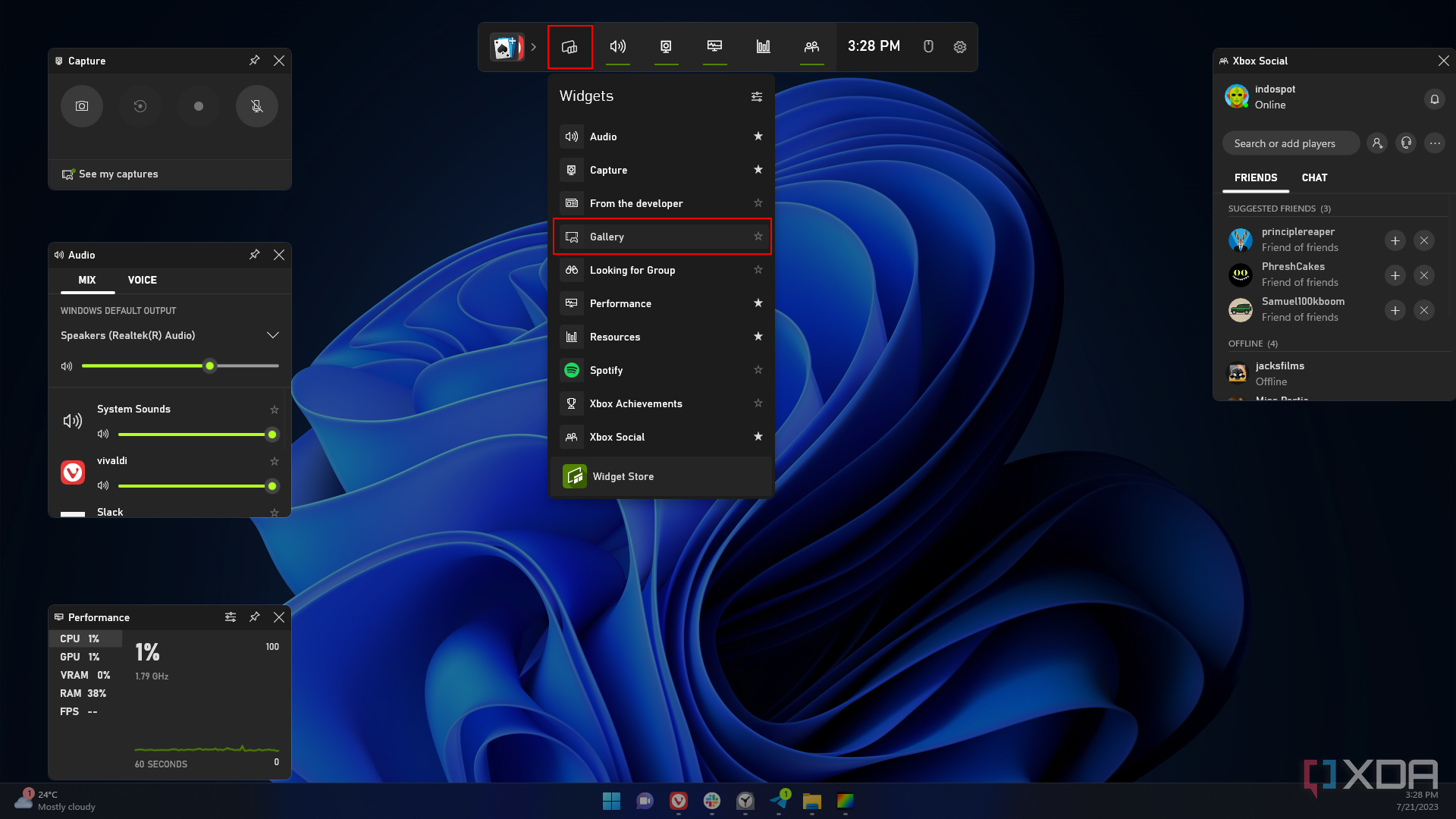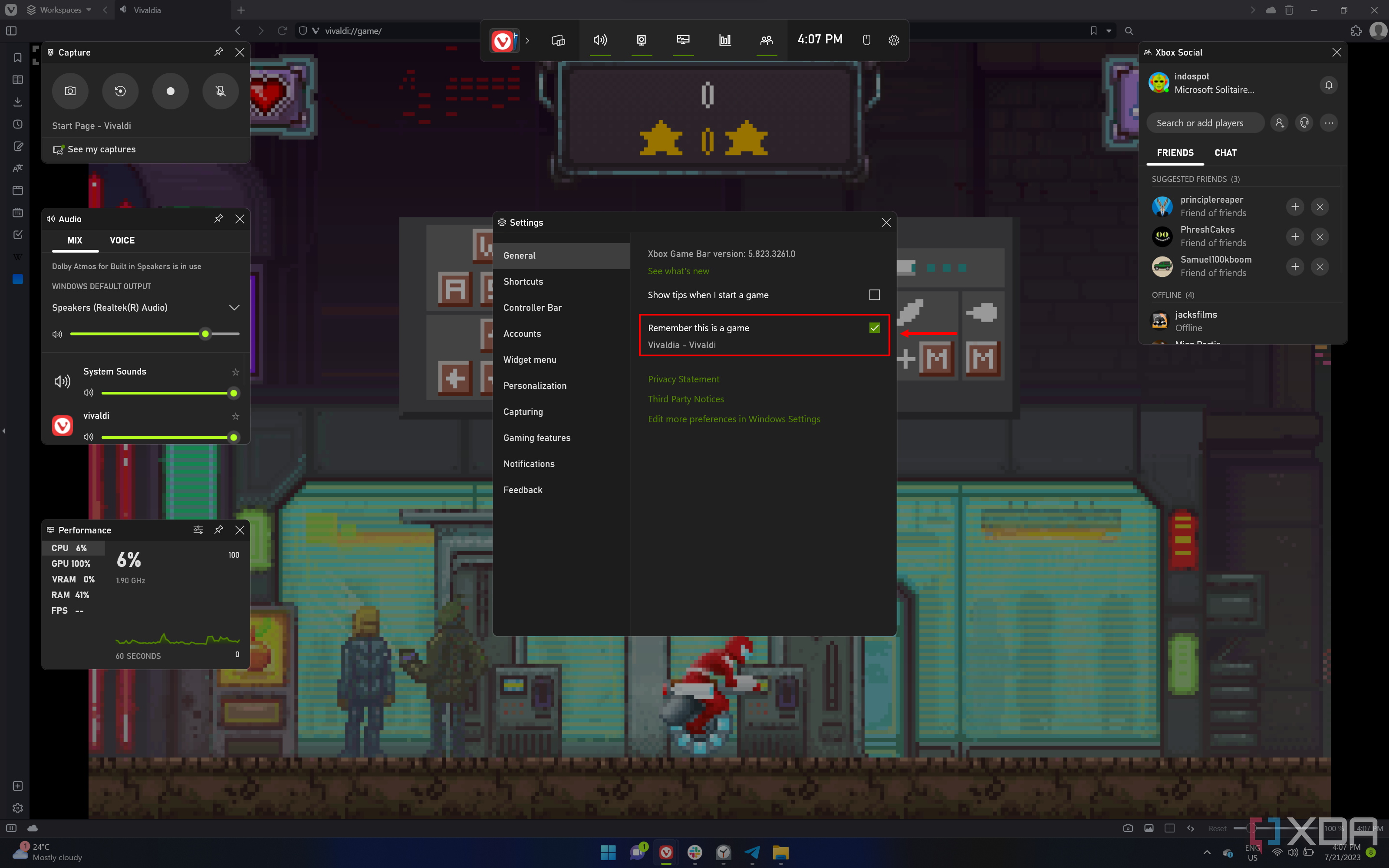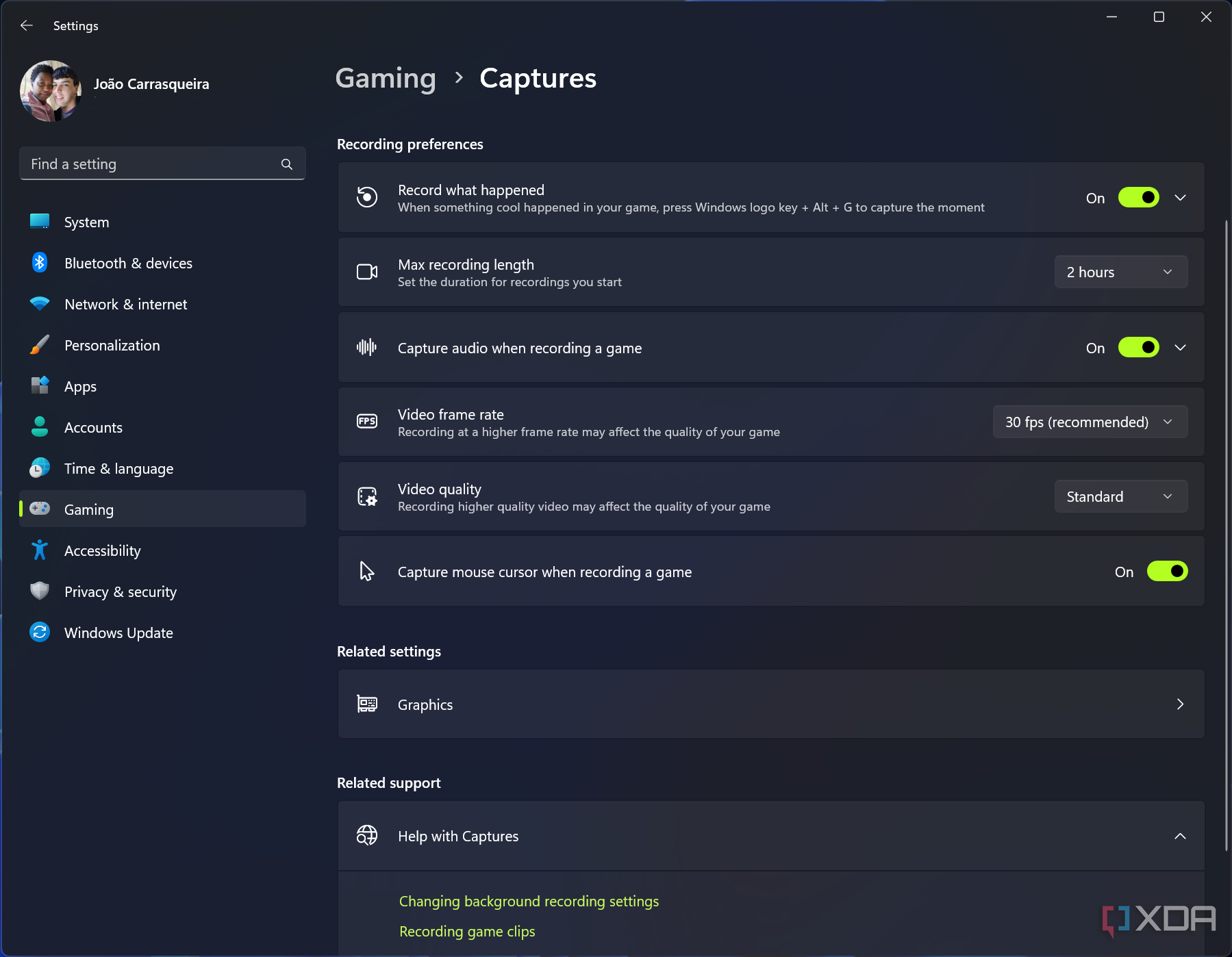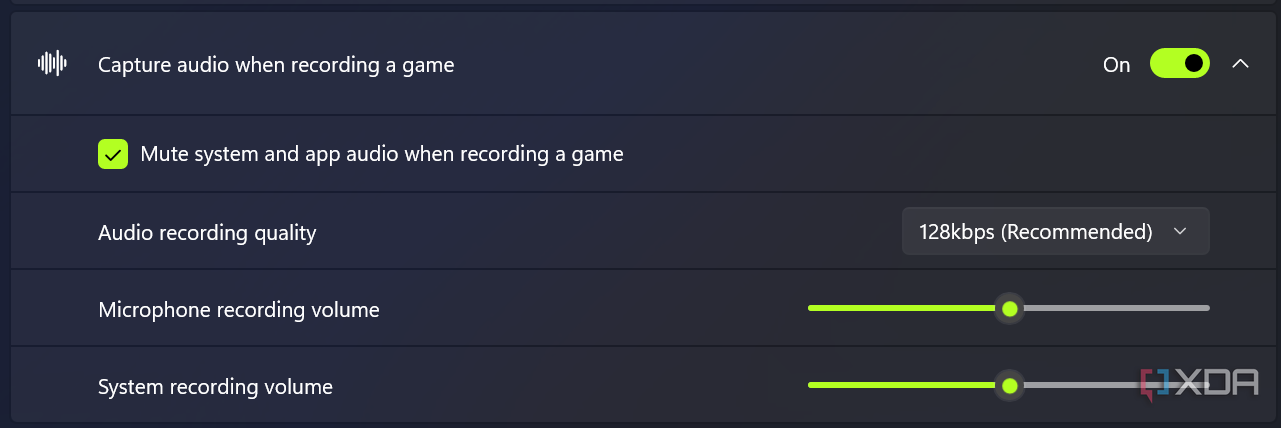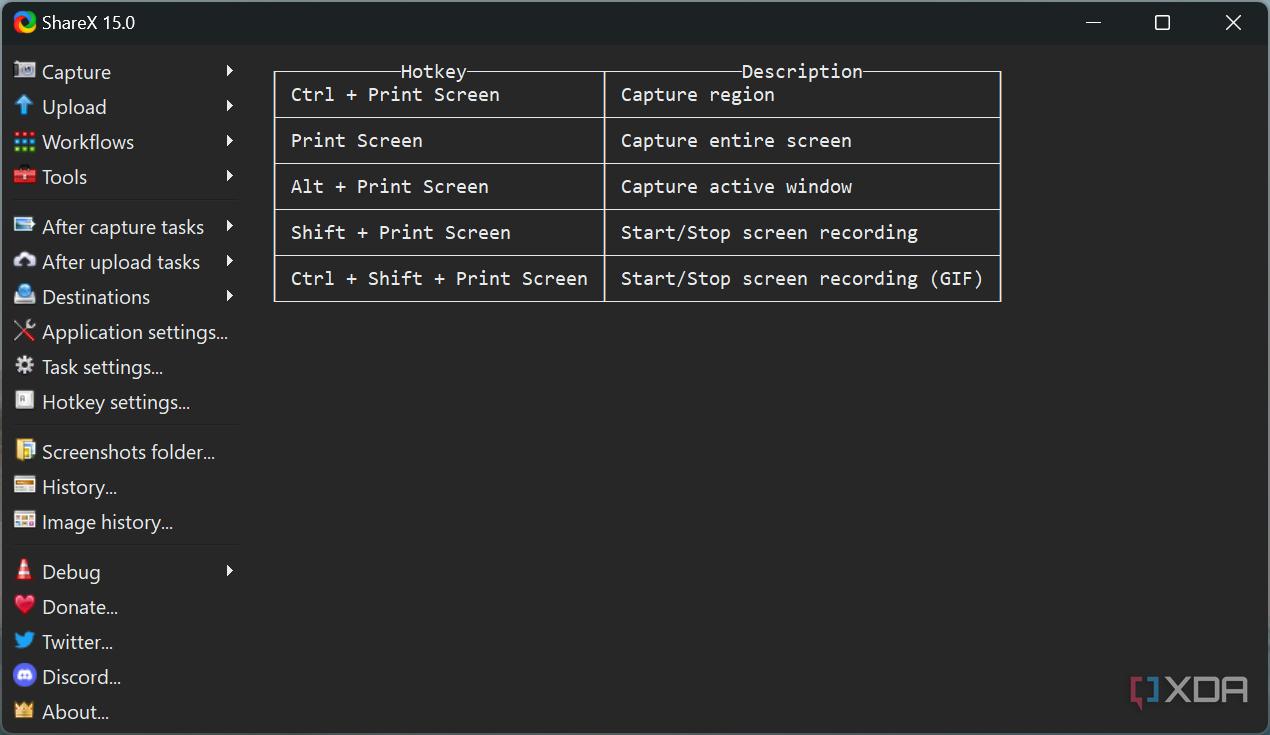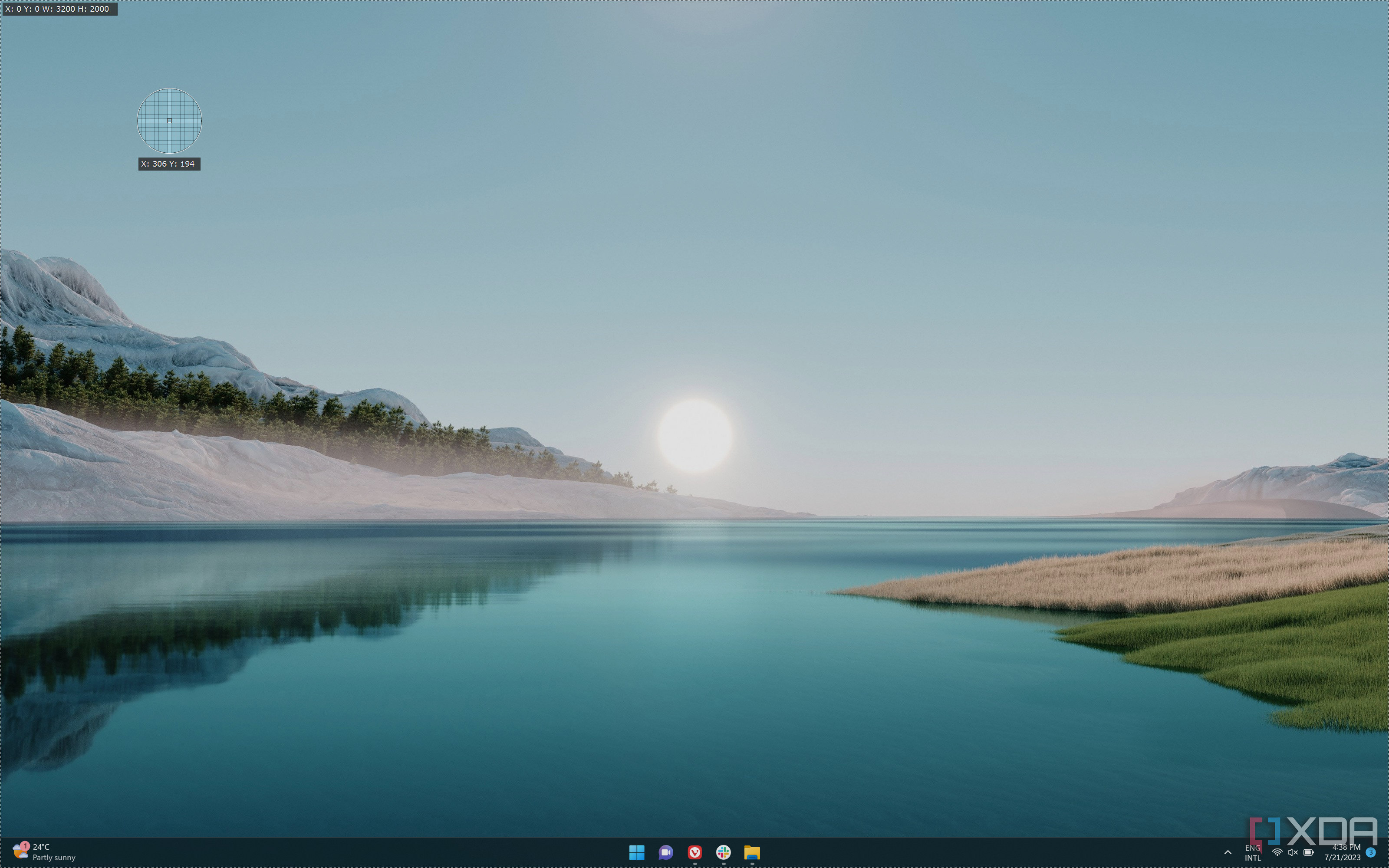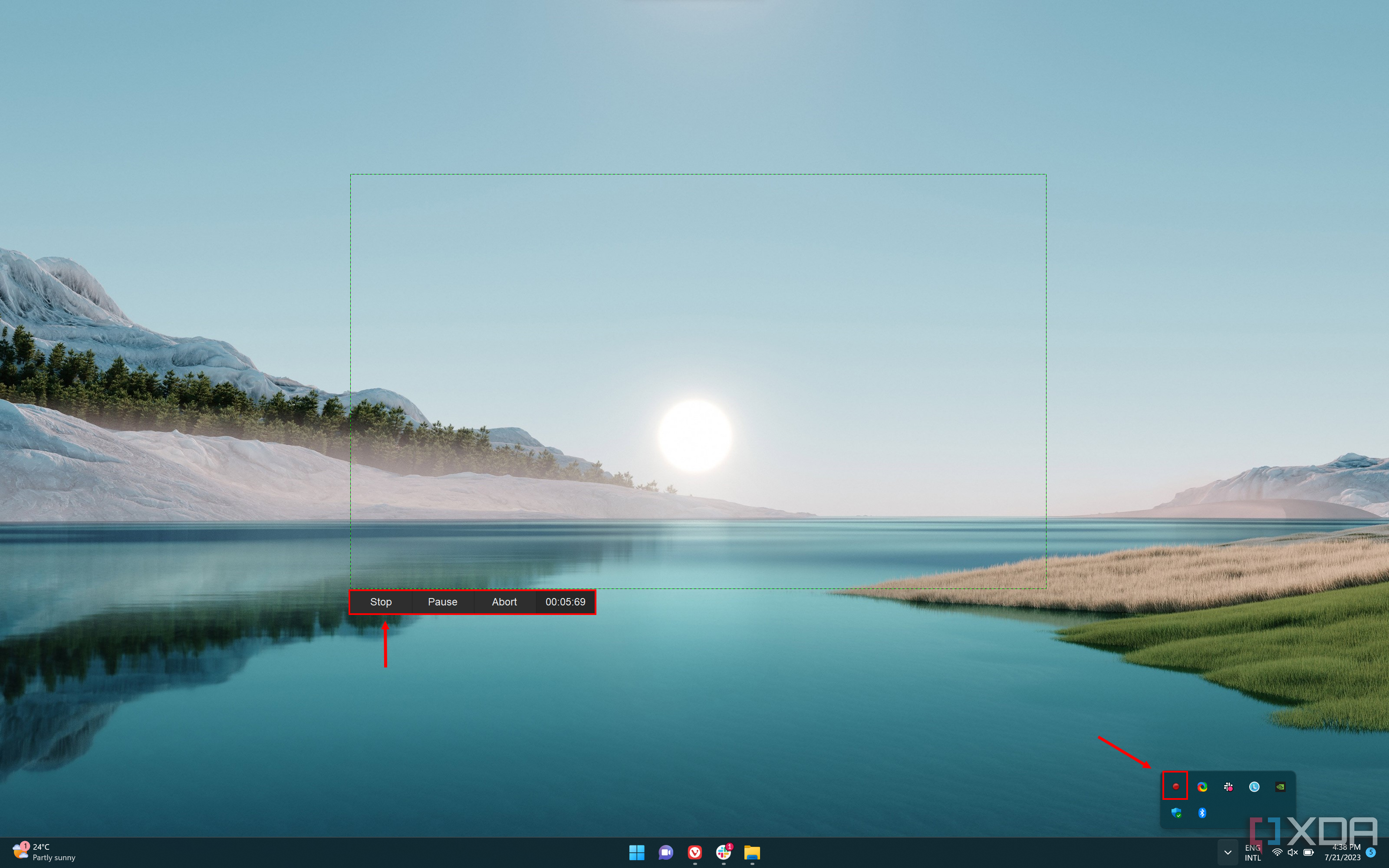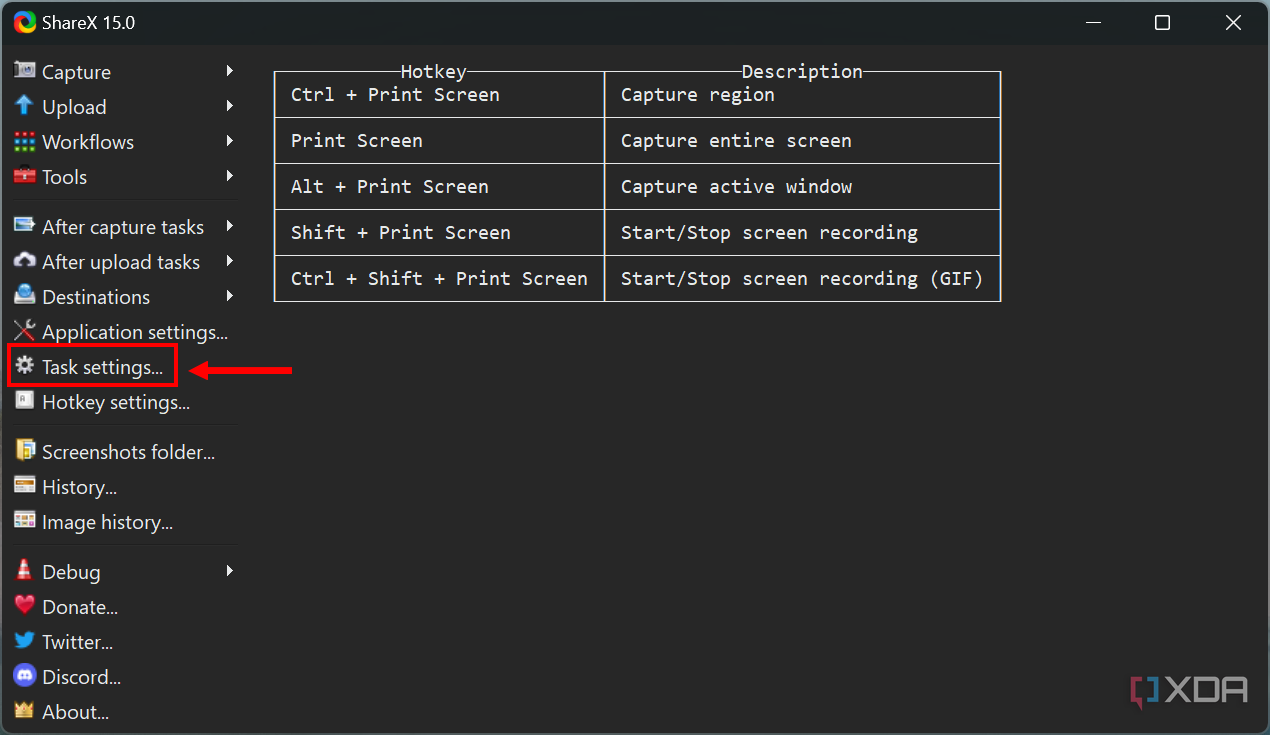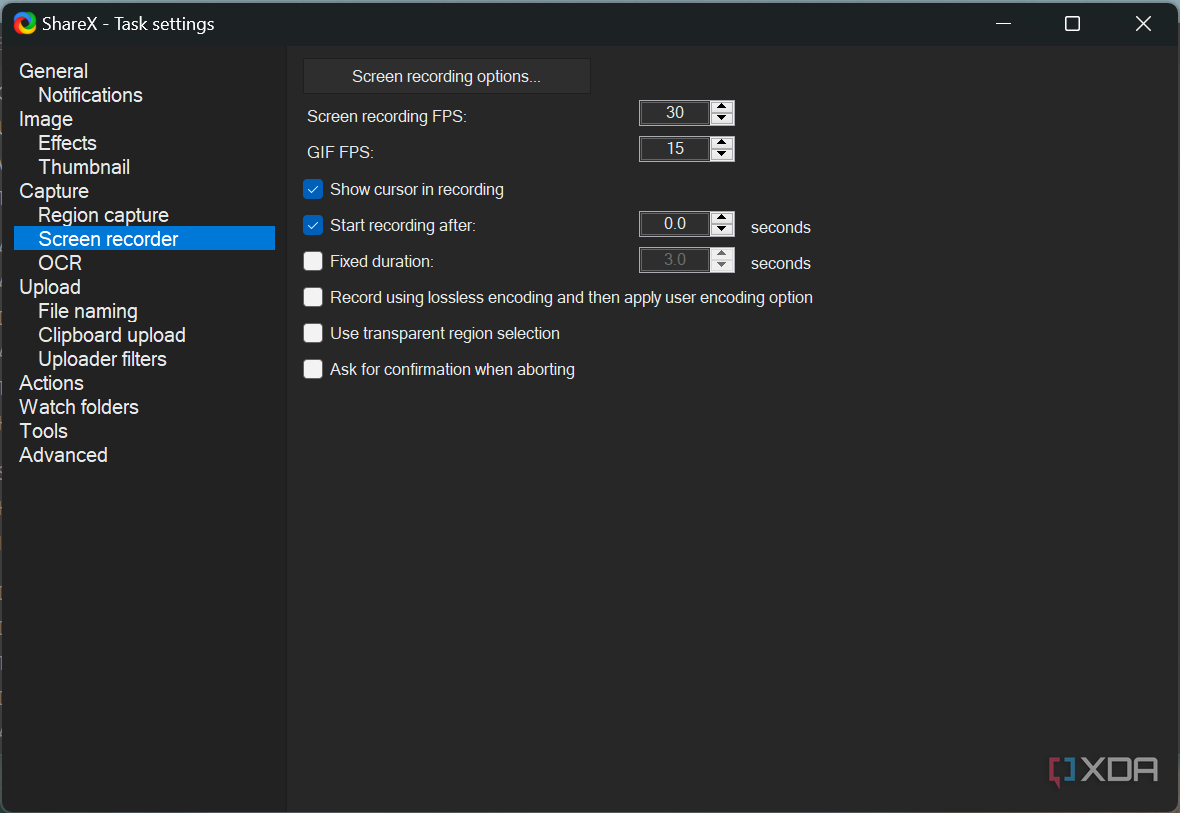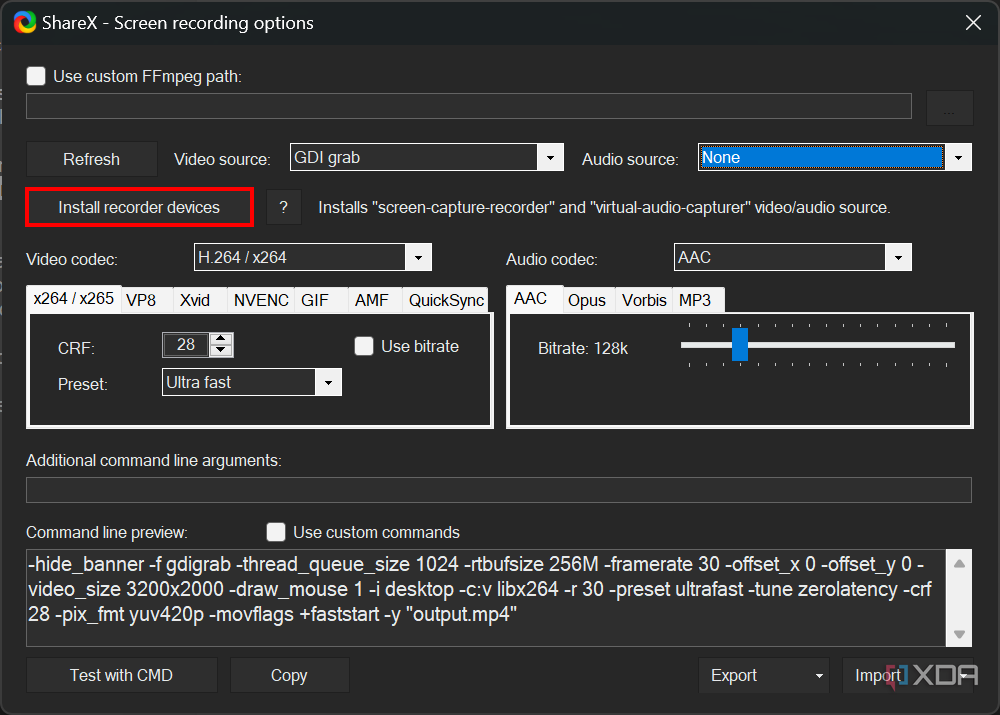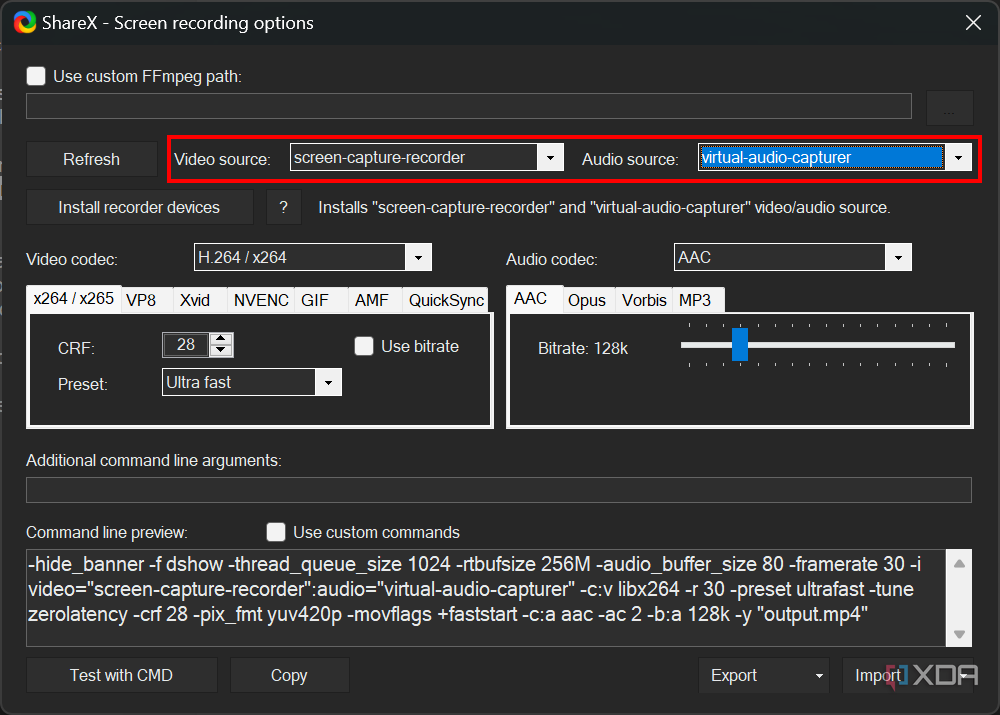Recording your screen in Windows 11 can be accomplished in more than a few ways, whether it's with tools built into the OS or with third-party software. Being able to record what's on your screen is incredibly useful, as it makes it easy to share content, share a specific problem (or a a potential solution), or capture gaming sessions to later share online.
There are many ways to record your PC's screen on Windows 11, and we're focusing here on the built-in functionality of the OS as well as a third-party solution through ShareX. Let's dig into how to properly set up and use these tools so that you can begin recording your screen in Windows 11 right now.
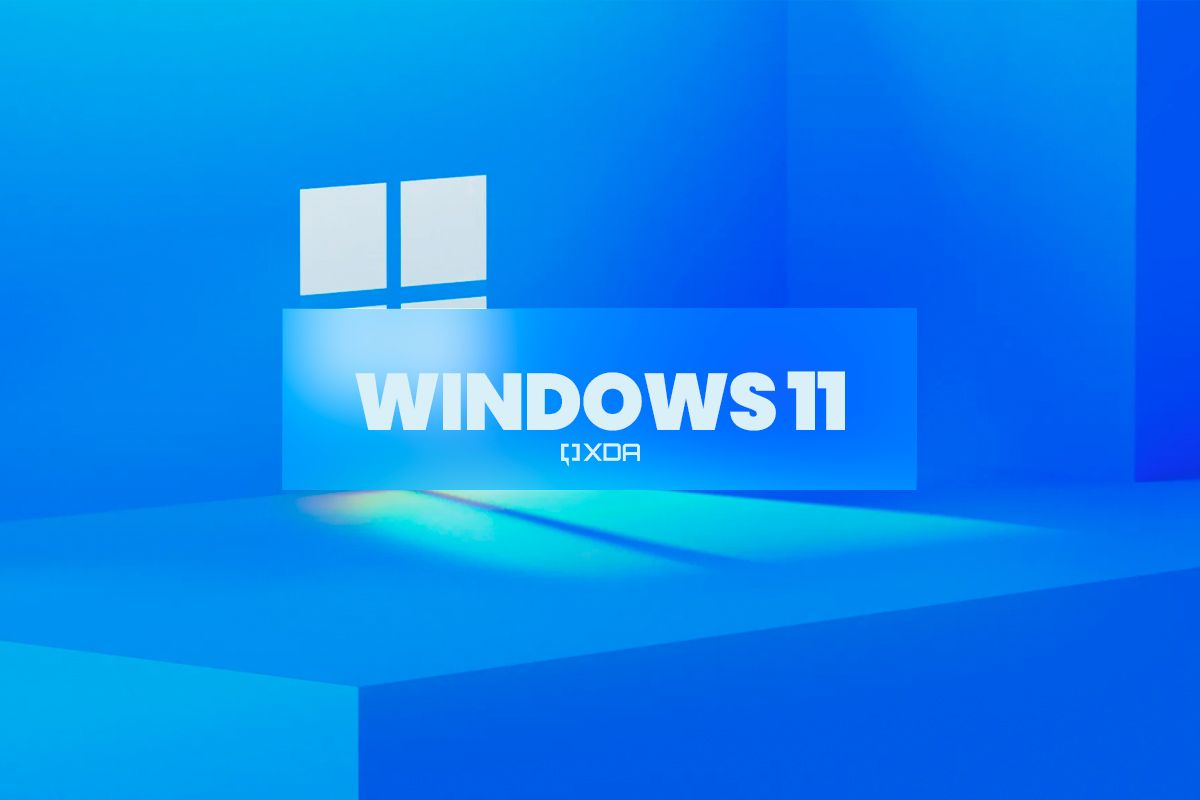
Windows 11: Everything you need to know
Windows 11 is the latest and greatest operating system from Microsoft, and it packs a ton of changes. Here's what you need to know.Screen record on Windows 11 using the Snipping Tool
It took quite awhile for Microsoft to implement a proper built-in screen recorder, but it's now here thanks to an update to the Snipping Tool app. Previously, the Snipping Tool could only take and edit screenshots, but it can now record video as well. It's not as feature-laden as some third-party tools, but for most people, it provides a proper solution without the need to install extra software. Here's how to use it:
You can't record across multiple monitors using the Snipping Tool.
- Launch the Snipping Tool app (you can find it in the All apps list in the Start menu).
-
Click the video camera icon to switch to video recording mode.
- Click New in the top left corner of the window. You'll be prompted to choose a screen recording area.
- Select a screen recording area by clicking and dragging your cursor. It can be any rectangular area, including the entire screen.
-
Click the Start button at the top of the screen. A three-second countdown will begin before the recording starts.
- Click Stop to finish the recording when you're done.
As you can see, it's fairly simple to start a screen recording this way. As mentioned, it's not a very advanced tool, but this already allows you to do any kind of basic recording, and most people won't need more than that. It's especially useful for anyone who doesn't want to install extra software on their PC.
Record games on Windows 11 using the Xbox Game Bar
The Snipping Tool method laid out above is great for recording anything that happens in the typical desktop environment, but those who want to record footage of a game should instead check out the Xbox Game Bar's built-in recording utility. While it can certainly be used to record pretty much any app that's running on your PC, it's most useful for games, especially if you're playing in fullscreen mode. Here's how to use the Xbox Game Bar to record:
Windows desktop and File Explorer cannot be recorded with the Xbox Game Bar.
- Launch the game or app you want to record.
- Press Windows key + G.
-
Click the Capture button in the top bar (it looks like a webcam). The Game Bar should launch with it selected by default, with capture tools located in the top-right corner.
The Capture controls include a few options, from left to right:
- Take screenshot lets you take a still screenshot.
- Record last 30 seconds allows you to save the last 30 seconds of gameplay. This feature is only available for software that's recognized as a game (see below).
- Start recording starts recording the game from the current point.
- The microphone button lets you mute or unmute your microphone during the recording.
- Click the Start recording button.
-
Click an empty area of the screen to dismiss the Game Bar UI. You can stop recording or turn the microphone on or off with the small bar that shows up.
If you click the Record last 30 seconds button, the video will automatically be saved to your Videos folder.
- Click Stop recording on the small bar that is visible when you are done. A pop-up will notify you the video has been recorded and you can click to view the video in the Xbox Game Bar. You can open the file's saved location from here too.
You can always press Windows + G to bring up the Xbox game bar again. To view your gallery, click the widgets button on the left edge of the bar at the top, then click Gallery. This will let you view all your recordings and screenshots. You can also find your recordings in File Explorer, in a Captures folder in your Videos library.
Recording with the Xbox Game Bar can get even easier by using the Windows key + Alt + R shortcut on your keyboard. This will start a recording right away, and you can use the same combination to stop the recording.
Setting up automatic recordings
In some games, it's hard to know when you're going to pull off a cool move or run into a memorable moment. That's why the Xbox Game Bar gives you the option to record the last 30 seconds of gameplay. The way it works is that the computer is constantly recording in the background, so when you want to save a moment, you can just use that option by pulling up the full Game Bar or by pressing the Windows key + Alt + G to immediately save what just happened.
The feature is enabled when you click the Record last 30 seconds button for the first time, and it's a good idea to do that before gaming so that you can just use it right away when you need to. But it only works for software that the Game Bar remembers as a game. If this button is greyed out for you, follow these steps:
- Press Windows key + G to open the Xbox Game Bar while the game or app you want to record is running.
- Click the Settings icon (it looks like a gear) in the bar at the top of your screen.
-
Check the box that says Remember this is a game. It's in the General section that opens by default.
From now on, the Xbox Game Bar will always record that app or game in the background, and you can press Windows key + Alt + G to save the last 30 seconds.
Enabling this feature will increase system resource usage since the computer is constantly recording. It shouldn't have a huge impact on performance, but you might notice it on slower hardware.
Change your recording settings
If you want to tweak some of the recording settings for the Xbox Game Bar, you can do it in the Windows 11 Settings app. These settings include the video recording quality, duration, and more. Here's how it works:
- Launch the Settings app.
- Click Gaming in the bar on the left.
-
Click Captures. You'll see this page with a variety of options. Here's what these settings do.
-
Record what happened: This toggle enables or disables the automatic recording of gameplay. You can expand this option to choose a few other settings, such as the length for automatic recordings (the maximum is 10 minutes) and whether automatic recordings should be enabled on battery power or while projecting your screen.
- Max recording length: Changes the maximum duration for recordings you start manually (up to 4 hours).
-
Capture audio when recording a game: This toggle lets you enable or disable audio during a game recording. You can expand this option to choose the audio recording quality, your microphone and system audio volume, and whether background apps should be muted so only the game is audible.
- Video frame rate: You can choose between recording videos at 30fps or 60fps. A higher frame rate requires more resources, so it can affect performance.
- Video quality: Choose whether to record video with Standard quality or High quality. This may affect overall performance while recording.
- Capture mouse while recording a game: Choose whether your mouse cursor should be visible on screen during recordings.
-
Record what happened: This toggle enables or disables the automatic recording of gameplay. You can expand this option to choose a few other settings, such as the length for automatic recordings (the maximum is 10 minutes) and whether automatic recordings should be enabled on battery power or while projecting your screen.
Screen record on Windows 11 with ShareX
While the built-in tools in Windows 11 do a pretty solid job of screen recording for most people, there are a lot of third-party apps that take screen recording to new heights. One popular option is ShareX. ShareX makes it easy to quickly start a recording using a keyboard shortcut, and it has a lot of advanced options for more experienced users. Here's how to get started with ShareX:
- Download and install ShareX from the official website.
-
Launch ShareX on your PC. You'll see a list of hotkey shortcuts to start recording in ShareX, along with a lot of menu options. Take note that screen recording can be started by pressing Shift + Print Screen (it should be PrtSc on your keyboard). You might also need to hold the Fn key to access the PrctSc key depending on your PC's keyboard setup.
- You might get a warning because some of the default hotkeys for the app overlap with system shortcuts. If you want to change your hotkey shortcuts, you can click Hotkey settings in the side menu. Hotkeys that conflict with system shortcuts will have a red square next to them. Screen recording shouldn't be affected, so you don't need to worry about this.
- Closing the ShareX window will minimize it to the notification area in the bottom right corner of the taskbar.
-
Press the hotkeys for screen recording (Shift + Print Screen by default) to start recording your screen at any time.
-
ShareX will ask you to choose a recording area. You can click any window to record that window, or if you're on your desktop, you can click the background to record the entire screen. You can also draw a custom area by clicking and dragging your cursor to record a specific part of the screen. If you want to record the entire screen while an app is open, you'll also need to manually select the entire area.
-
ShareX will ask you to choose a recording area. You can click any window to record that window, or if you're on your desktop, you can click the background to record the entire screen. You can also draw a custom area by clicking and dragging your cursor to record a specific part of the screen. If you want to record the entire screen while an app is open, you'll also need to manually select the entire area.
-
Click the Stop or Abort button to stop recording. These options aren't visible if you're recording the entire screen, so you'll need to look for the red dot in your system tray area. Alternatively, you can press Shift + Print Screen again to stop the recording.
A pop-up will appear when you stop recording, allowing you to view your recorded video in your default video player. By default, videos are automatically saved in a dedicated ShareX folder in your Documents library. They save with randomly generated names, so you'll want to sort by date to make things easier to find.
Change ShareX screen recording settings (and add audio recording)
If you want to change settings like the frame rate of the video recording or if you want to record audio along with the video, you'll need to head into the app's settings. Here's what you need to do:
- Launch ShareX on your PC. You can also right-click the ShareX icon in the notification area and choose Open main window.
-
Click Task settings in the side menu.
-
Click Screen recorder in the side menu of the new window that shows up. This menu allows you to customize the framerate of your video, set a delay for when recording starts, or set a fixed duration for screen recordings.
-
Click Screen recording options at the top to enable audio recording.
-
In the Sources section, you can choose what sources to record video and audio from. By default, the only audio source available is your microphone, if you have one. To record system audio from your PC, you'll need to click Install recorder devices. This option won't be available if you installed ShareX from the Microsoft Store.
-
Follow the installation process as normal, and you'll see your sources change for both video and audio. The video source will be screen-capture-recorder and the audio source will be virtual-audio-capturer. This will enable recording system sounds, and you'll need to change it back to your microphone if you want to record microphone audio instead. You can't do both at the same time, unfortunately.
-
In the Sources section, you can choose what sources to record video and audio from. By default, the only audio source available is your microphone, if you have one. To record system audio from your PC, you'll need to click Install recorder devices. This option won't be available if you installed ShareX from the Microsoft Store.
- Close all the open windows. You can now record your screen with system audio included.
These are the essential steps for recording your screen in Windows 11. With tools like ShareX, there's a lot more you can do, but we'll leave that up to you if you want to dive deeper into all the capabilities it offers. We mostly chose it for this guide because it's a free tool that isn't loaded with advertisements and restrictions forcing you to pay up.
Screen recording will work on any laptop or PC, but it can use significant resources, so if you have a very low-end PC, you may notice some performance issues, especially if you're trying to record a game. If your laptop is too slow to play games while recording your screen, maybe check out the best gaming laptops on the market right now. Those options are sure to have more than enough performance to handle screen recording.
Other screen recording options suggested by Microsoft
ShareX certainly isn't the only third-party software option when it comes to recording your screen in Windows 11. Microsoft actually suggests a couple of alternatives in its own screen recording guide for Windows.
The Screen Recorder for Windows 11 app is a popular app with free tier that offers a full range of features. Some in-app purchases available to remove things like watermarking and to extend recording time limits. A lifetime license for the premium features costs about $15.
There's also a great Screen Recorder Edge extension you can add to your browser for free. It allows for capturing your screen, your screen and camera, or your camera feed only. It's well-rated and has more than 300,000 users at the time of writing. Both the app and extension should work well across Windows 10 and Windows 11.

Windows 11 features in preview: Everything you can try right now
Windows 11 is always getting updated with new and experimental features

